Bipes
Stander device for Myelomeningocele (severe condition of Spina Bifida)
Designer: Cristina Vargas Del Valle
A design problem was identified within the hospital that takes care of children in our country, the Hospital Nacional de Niños (HNN). The Physiatrics departament prescribes a stander device for children with myelomeningocele who need, among others, a process of rehabilitation throughout their life.
This device helps them to adopt a standing posture for a few hours a day, since they can' t do it alone.
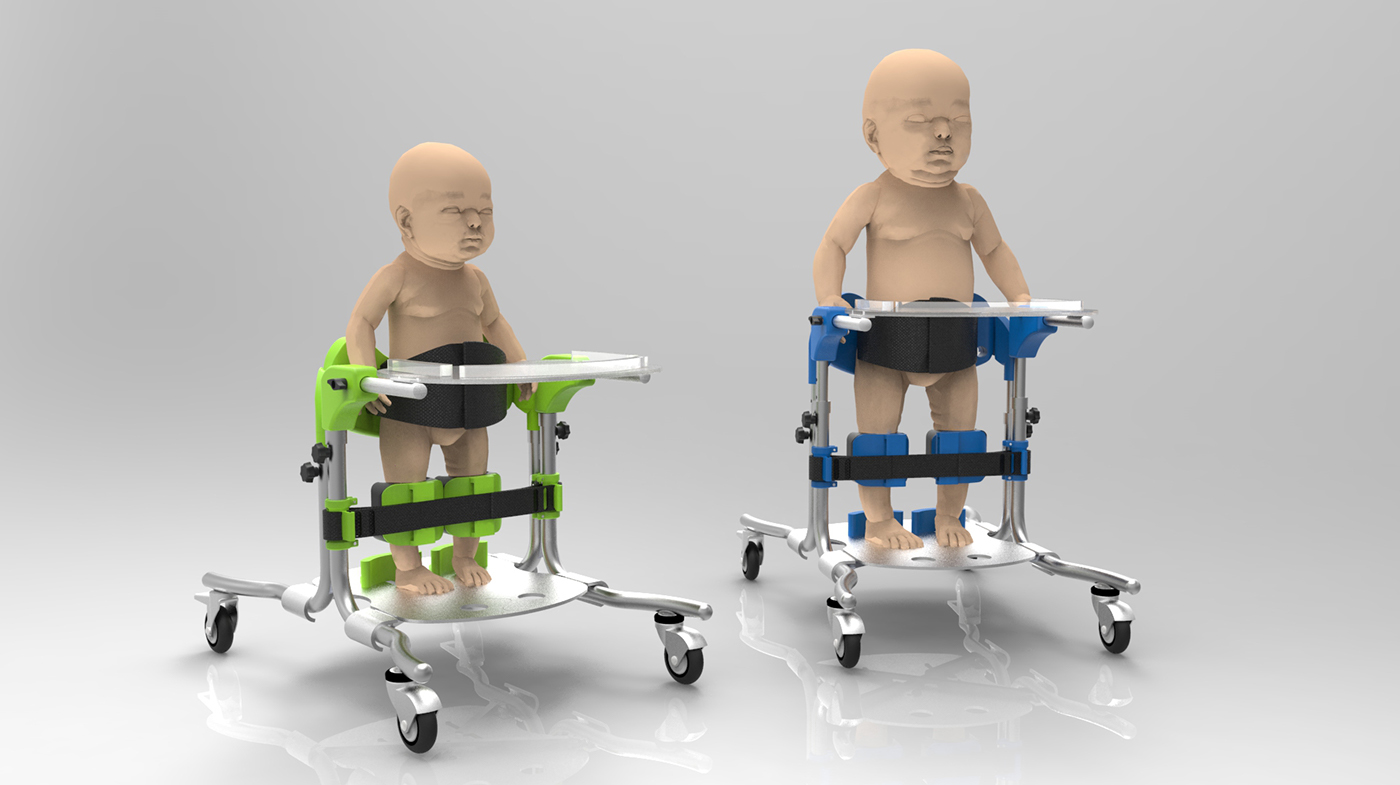
Phase1: investigation
1.1 National context: what happens at the hospital?
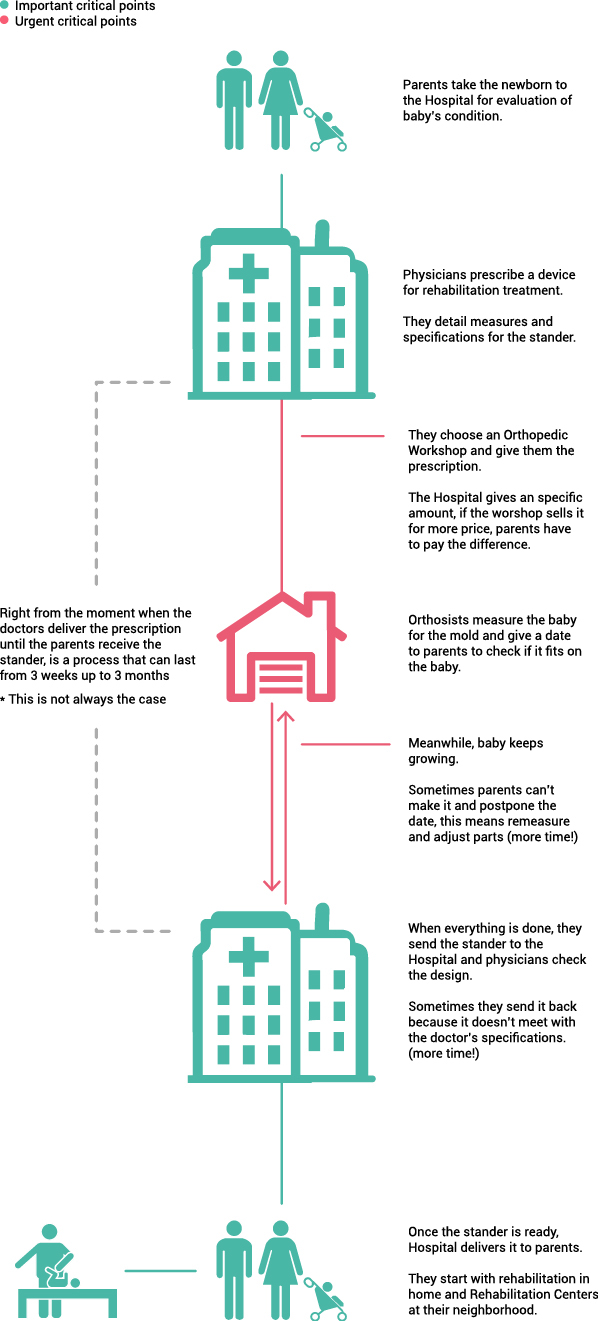
Current design for standers at the hospital:

1.2 User characteristics:

1.3 User needs
Benefits for using stander device in babies with Myelo.
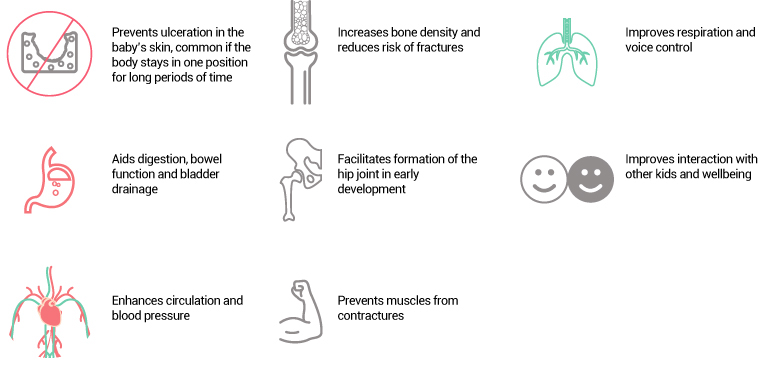
After interviews with physicians, physical therapists, parents, and manufacturers, specific needs were defined and translated into design requirements.
Below are the most important ones that come closer to fulfilling the objectives of the project.

1.4 Problem to solve
The problem has different dimensions. Starting in how much time it takes to fabricate a stander and check if everything fits and meets the doctor's specifications. A delay in the process means that the baby won't start with rehabilitation soon.
The negligence of some parents to skip the fit-date, makes the orthotists reschedule everything and that delays the delivery to the HNN.
Another factor is the design. Because the actual stander is made of one piece, when the baby grows (and babies grow faster), it won't fit and there can be some pressure points that are uncomfortable and produce ulceration. Thus, parents have to return the device to the workshop for corrections.
Other alternatives in the international market are too expensive for parents, so they need to stick at the hospital's subsidy.
A better design in the stander device, enhances not just the delivery time but it's useful life. Parents won't depend on the workshop for adaptability or on the doctor's approval each time it's modified.
Phase 2: analysis
The methodology used describes groups of anaylisis related with the product, users and national reality. After each analysis, a list of facts and requirements were made based on the information. Below are the most important ones that were part of the design development.
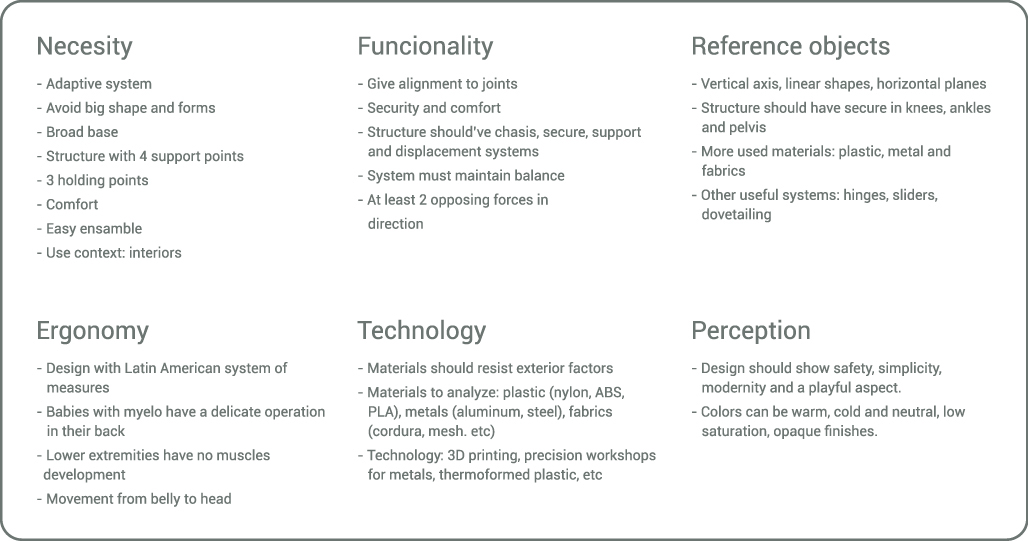
Phase 4: final design
4.1 Systems and components
Bipes is a verticalization system that allows the baby to take a standing posture for a few hours a day. This is achieved through different systems such as adjustment, support, chasis and displacement, and which allows to adjust the hip's, knee's and ankle's supports along vertical axes paralleled to the body’s joints.

The chasis is designed to maintain the centre of gravity inside the structure to give more stability.
The adjustment system is also design to give comfort and security to the baby’s characteristics according to its conditions. That is why the main support and the bigger one is at the lumbar area. This gives support and protection at the lower back, an area that has protuberances of care.
The knee supports gives protection and fits to different knee shapes, releasing pressure to the kneecap and distributes the tension more efficiently.

4.2 Materials and manufacturing
The materials are a proposal according with the technology that the hospital has and how much they can afford for the standers. The idea is that the hospital itself, through their own Orthoses Workshop, fabricates the stander devices. Materials can improve and change depending on the results of a test with users (this phase hasn't been developed yet).
Below are presented, broadly, the materials ft the proposed manufacturing processes.
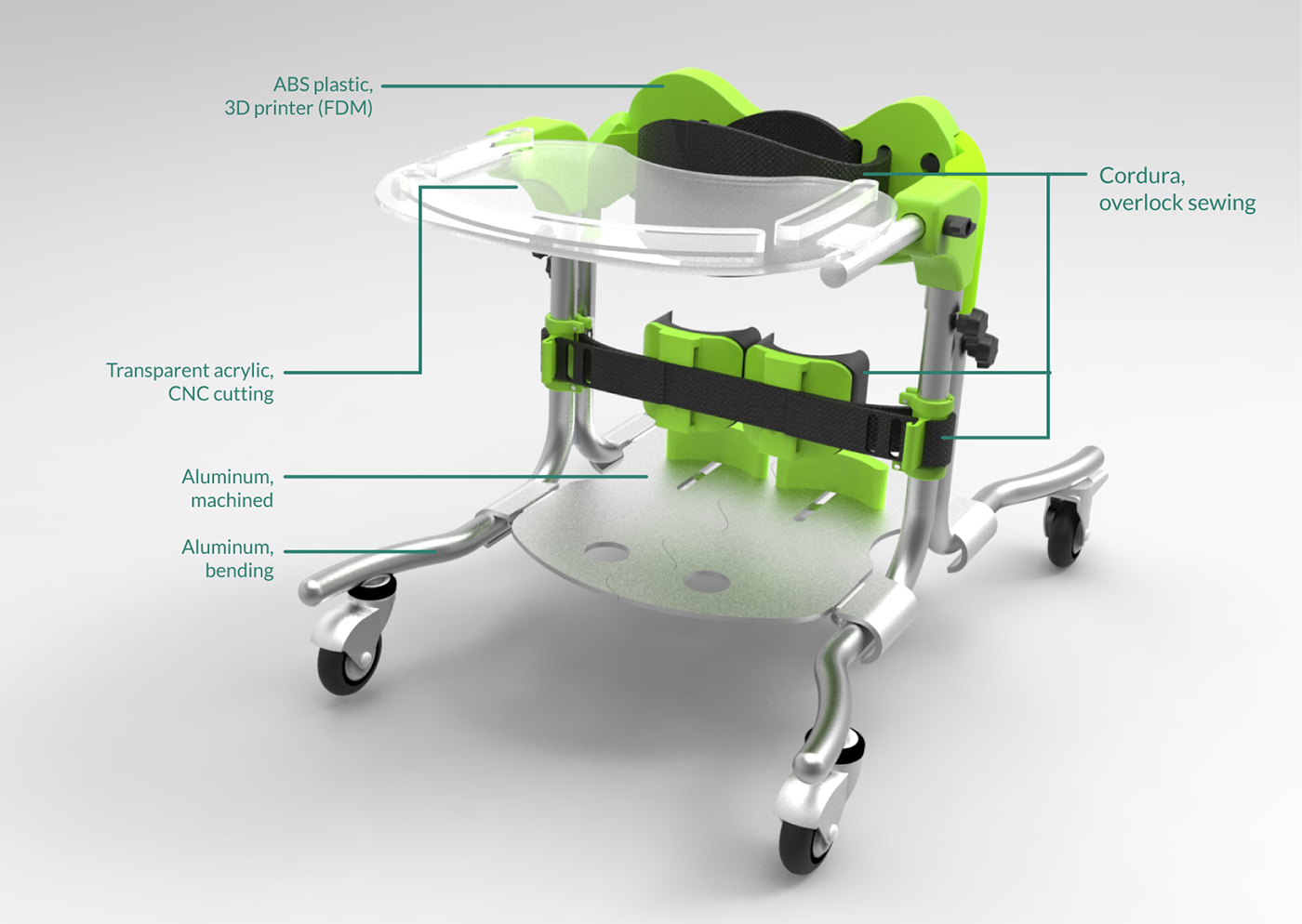
4.3 Context of use
Bipes is manufactured at the hospital but the usage environment are their homes and rehabilitation centers where the baby receives the therapy.
So, it is very important that the perception and aesthetic of the stander fit in a learning environment of a healthy kid in a normal developing proccess. Full of workstations for children, games to develop their motor and intellectual skills. It should be in an environment where children feel comfortable using the stander device and other children want to interact or play with them at the same time.

Thank you for watching!
If you have any comment or suggestion, please leave a message or contact me directly: crisvargasdelvalle@gmail.com
This project has a lot of energy, love and time invested. Please respect it and never copy or reproduce without my permission, I will appreciate that so much!





